WHICH 360 CAMERA SHOOTS THE BEST VIRTUAL TOUR? (RICOH Z1 VS RICOH X)
Introduction:
Technology just doesn’t sit still, does it? As the smartphone slowly squeezes out the DSLR in real estate photography, we now find ourselves comparing other emerging devices - devices that probably no one saw coming even 10 years ago.
Ten years ago, for example, no one would have suspected the rise of the 360° camera (the one required to shoot a Virtual Tour) in the realm of real estate. Heck, it seems like only two years ago that the New York Times declared “Virtual Tours Are Here to Stay”.
When the pandemic hit, agents had to scramble to learn how to shoot a Virtual Tour for real estate. Now that Virtual Tours have become an essential part of real estate marketing’s mainstream, the new struggle is to keep up with the developing technology.
Believe it or not, the first 360° camera (the sort of camera now used to shoot a Virtual Tour) was invented in 1857! When photography switched to flexible film from heavy glass plates in 1888, several more panoramic cameras came into being. But not even the great innovators who created them could have foreseen how the device they were pioneering would come to change, even save, the business of real estate.
One hundred sixty-three years after the first panoramic camera was invented, the coronavirus pandemic came along. Everything changed in the way real estate was marketed, bought, and sold. During the pandemic, the Virtual Tour became the most important feature in the real estate marketing tool kit, allowing agents to show properties even during the height of the lockdowns.
Virtual Tours: Still Vital After The Virus
In this post-pandemic age, the Ricoh Theta Z1 (released in 2018) has been widely regarded as the best camera for shooting 360° Virtual Tours.
When Ricoh recently released its Theta X 360° camera in April 2022 (as a supposed improvement upon the Theta Z1) many agents and photographers realized how unequipped they were to assess the quality of these emerging devices. Many wondered: Should I make the shift? Are there any big advantages to the Theta X over the Z1?
Reading about it on the internet doesn't necessarily help. For 90% of the population, including most real estate agents, the technical jargon used to 'clarify' the capabilities of photography equipment can be harder to decipher than early Egyptian hieroglyphics!
Don’t worry, that's what we’re here for!
In this post, our co-founder and resident photography expert Brad Filipino cuts through the geek speak and answers the one and only question that real estate professionals want to know: Which one is better for shooting 360° Virtual Tours?
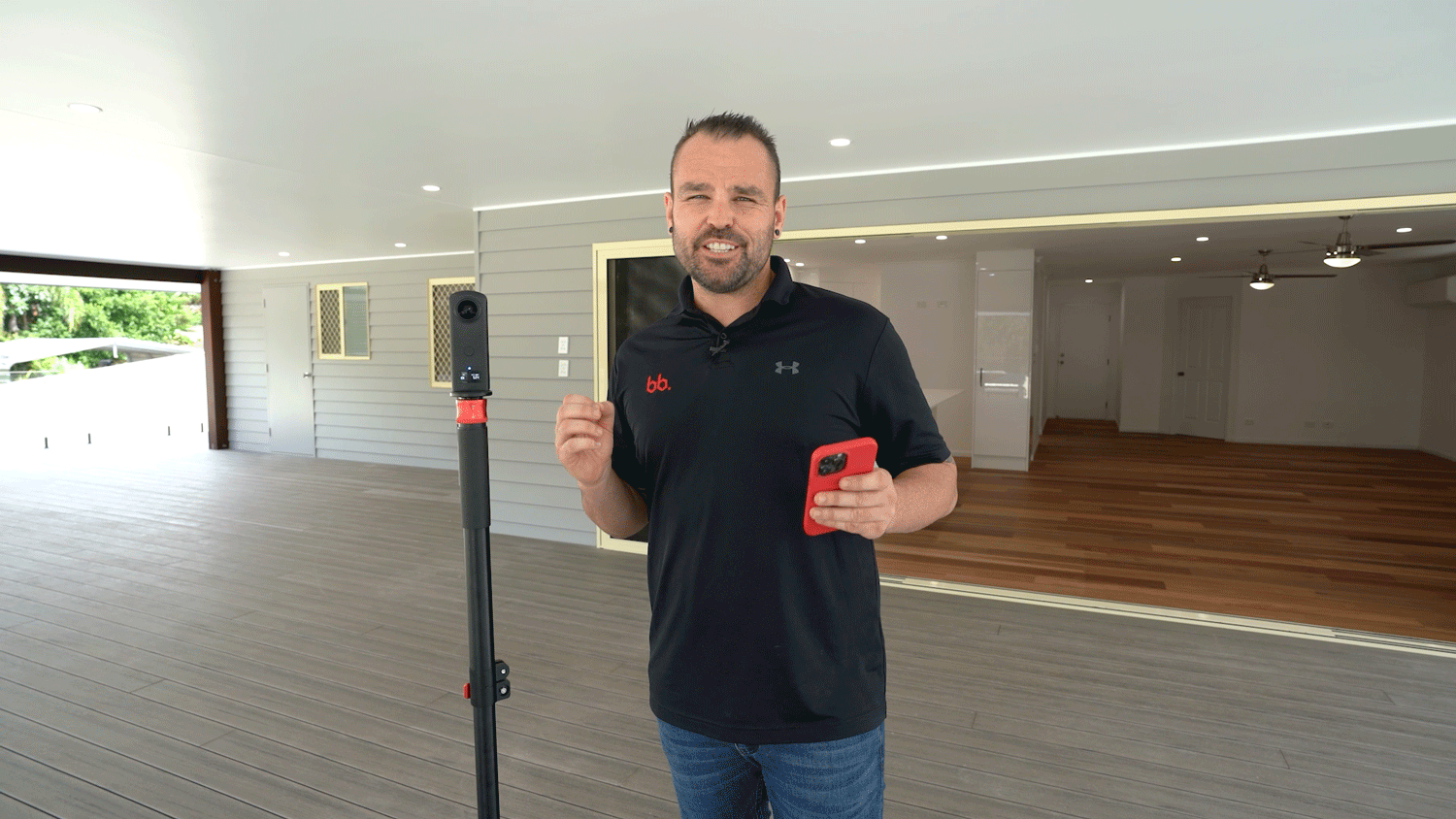 |
| Brad sets up the Theta Z1 in a covered outdoor space to commence our head-to-head matchup between the Z1 and the Theta X. |
The Experiment: Theta X vs Theta Z1
There is only one way to find out which of these two late Ricoh 360° cameras is best for shooting Virtual Tours: take them out into the field and get someone who knows how to use them to put them to the test. This is exactly what we did in our latest YouTube feature.
In this feature/video tutorial Brad puts the Ricoh Theta Z1 and the Ricoh Theta X in direct competition with one another, even-ing out all the variables to see if there are any major differences between the predecessor and the flashy newer model. The result might surprise you!
The nature of the experiment was as follows: Brad took the older (and slightly more expensive) Theta Z1 and the recently released Theta X to the same property, placed them on the same monopod, and shot a 360° Virtual Tour in the same five locations.
The household locations Brad selected were the ones commonly deemed most important when marketing a home: indoor/outdoor covered location, living/dining room, bathroom, bedroom, and purely outdoor location on a beautiful back patio. The only variable we couldn't control in this video was, of course, the weather - which you will notice goes from cloudy, to hazy to sunny throughout the video shoot.
No worries there, as anyone who's used our Image Enhancement or Day to Dusk services, has come to know the weather is never any match for the photo-retouching prowess of BoxBrownie.com!
The Most Essential Setting: HDR Rendering
If you want to know how to shoot the best Virtual Tour, the most important thing to do is ensure you select the HDR Rendering setting on your 360° camera.
Whether you are shooting on the Theta Z1 or the Theta X, your results will be substandard if you neglect to select this shooting option.
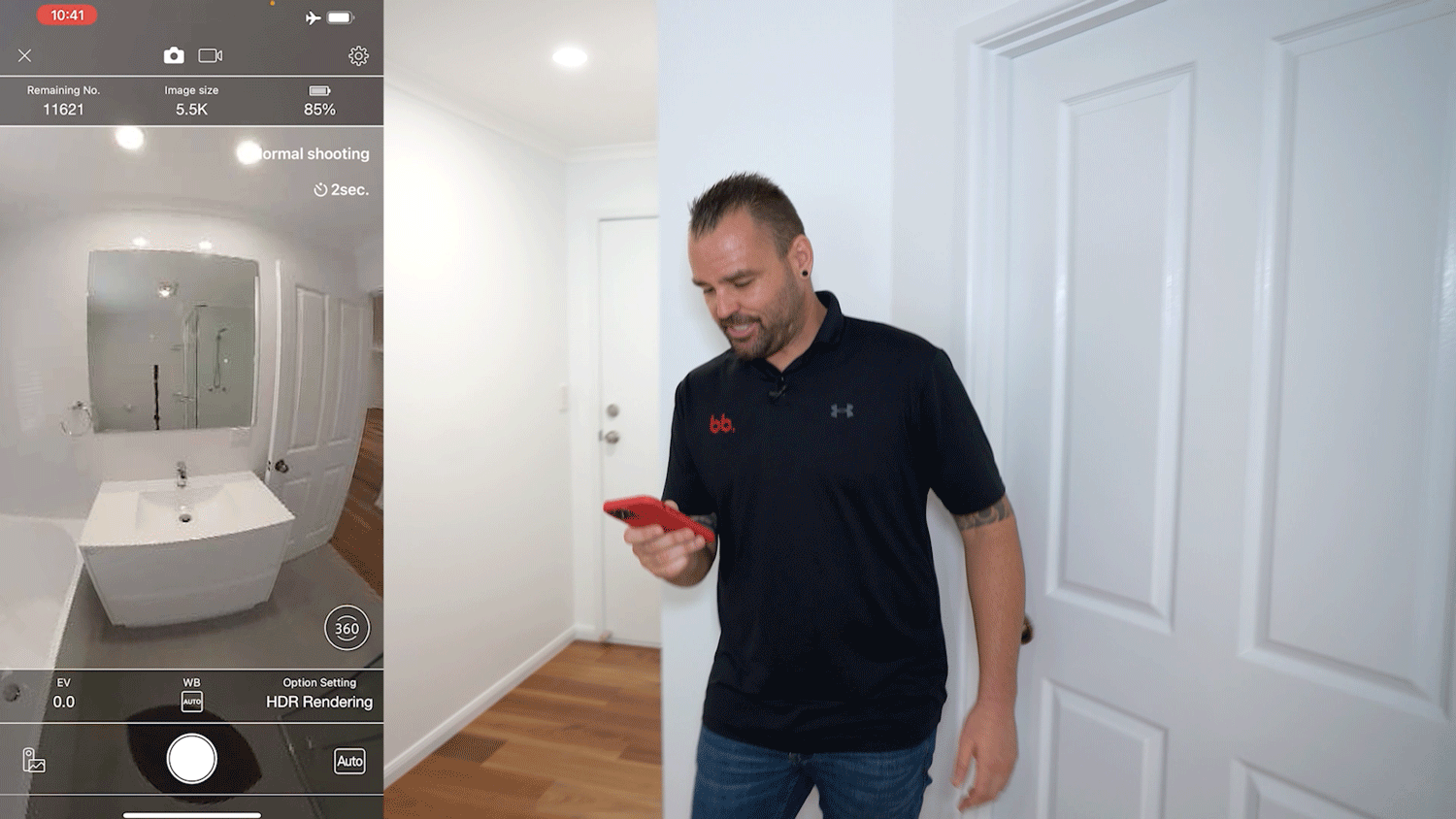 |
| Here Brad is standing in the hallway, out of the way of the camera's eye, as he prepares to shoot the Virtual Tour for the bathroom. The left side of the split-screen shows that Brad has selected the HDR Rendering setting to capture the room. To produce the highest quality Virtual Tours, this setting is a must for every room in the house! |
If you want to know more about HDR Rendering, check out our post called Best Practices in Real Estate Photography: What are They?
Essentially HDR Rendering is the feature that makes looking out the windows in your real estate photography look the same as if you were standing in the room in real life, looking out the window. It's a great way to balance and highlight the way light floods a room, and Virtual Tours that have been shot without using this feature often appear gloomy or far too bright.
The Second Essential: Image Enhancement
After we shot our Virtual Tour Images we ran them through our Image Enhancement edit. Just as it is essential to shoot with the HDR Rendering setting selected, it is imperative to edit your images before finalizing your Virtual Tour.
From the very first room we shot, it became clear that both the Theta Z1 and the Theta X were capable of capturing spectacular Virtual Tours. Can you see any difference in the images below?
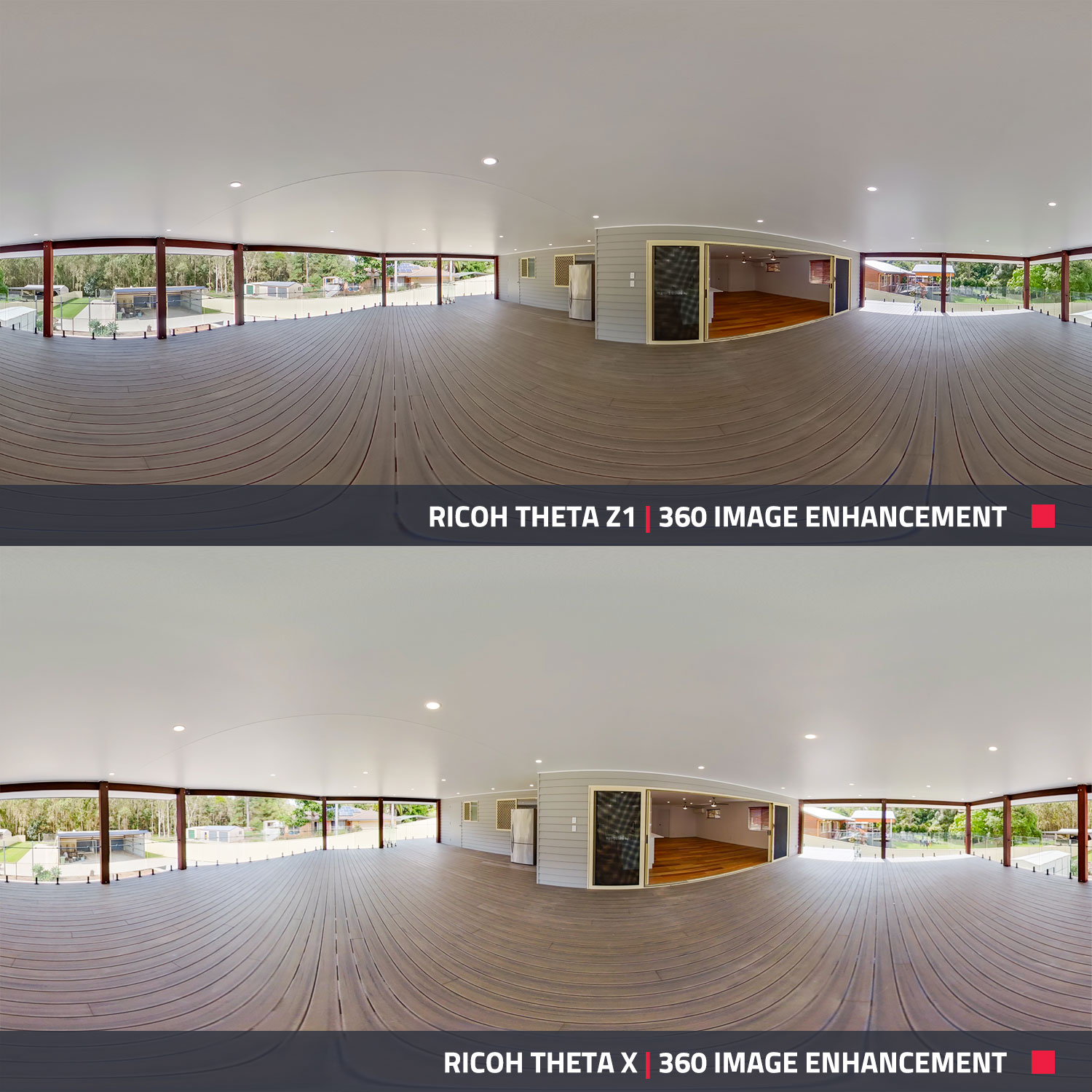 |
| When HDR Rendering and Image Enhancement are applied, there is almost no difference in quality between the Ricoh Theta Z1 and the Rico Theta X. Both look brilliant! |
After shooting the covered outdoor space we took our monopod and our two test subjects to the all-important bathroom. In our bathroom sequence, the images shot with the newer Theta X might have a slight advantage over those captured by the Z1. There might be a touch more sparkle to the silver and a little more gleam to the white basin in the X version of this shot, though Z1's version is by no means shabby. What do you think?
(Note that in this and all the indoor pictures Brad has turned the lights on in the room. For other tips on how to prepare a room for a photoshoot check out Brad's Pre-Photography Checklist)
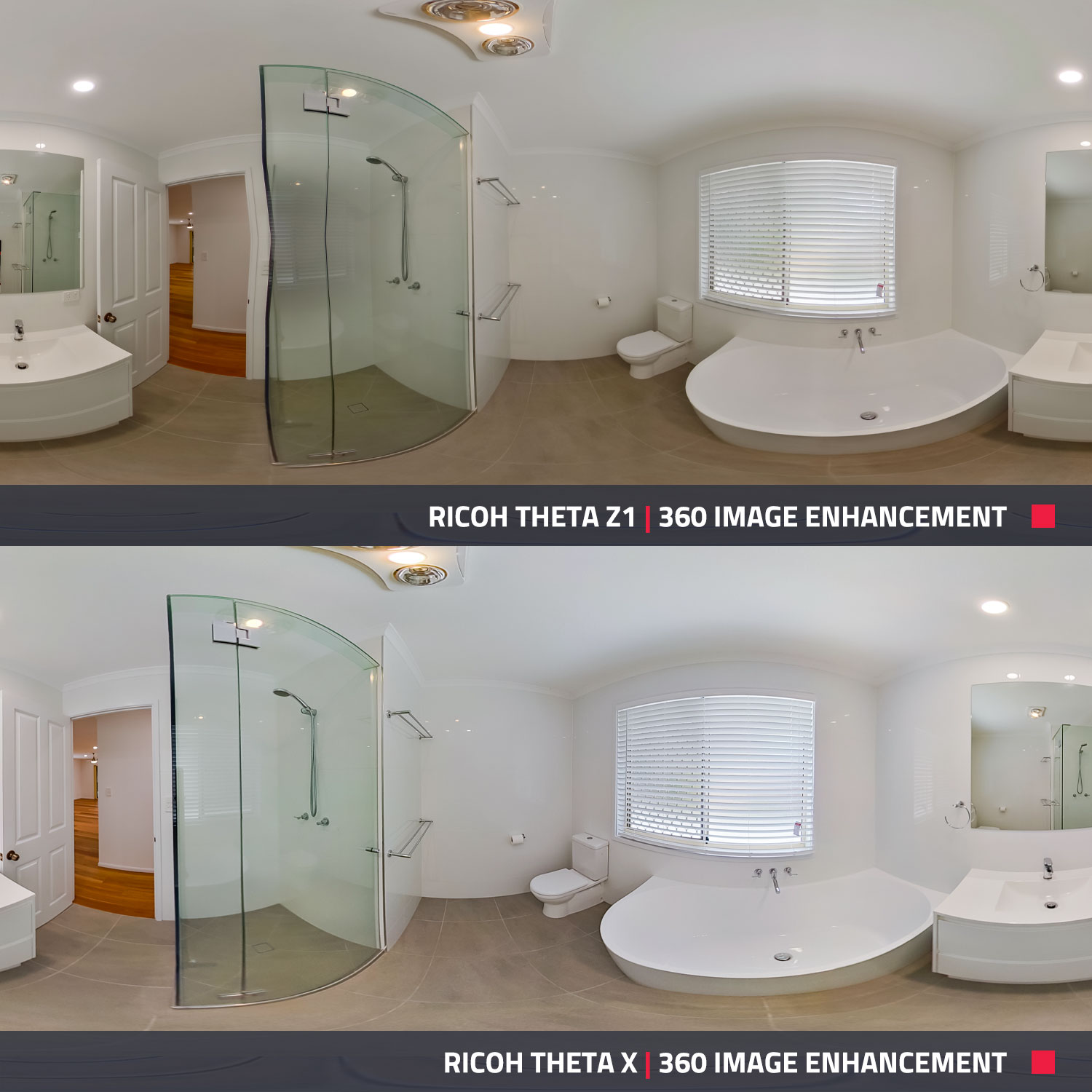 |
| The two images in our bathroom sequence indicate again that when Image Enhancement is applied, and your HDR Rendering setting is selected, both the Theta Z1 (TOP) and the Theta X (BOTTOM) can capture crisp, bright, superb images for Virtual Tours. The Theta X might have a slight advantage here, though. What do you think? |
The same result occurred with each room we shot, including the outdoor space, and it was very pleasing to the eye. Although, this was not necessarily the case when editing was not applied to the images.
To Edit Or Not To Edit?
Whether you are shooting indoors or outdoors or with the Ricoh Theta Z1 or the Ricoh Theta X, it is vital to edit your images before turning them into a Virtual Tour.
We understand that time is of the essence, but don't let this deter you from giving your images the proper treatment. We offer a 360° Image Enhancement edit and a Virtual Tour with a guaranteed 48-hour turnaround time - the fastest in the business and the best way to ensure your listing is presented in the best possible light.
As you can see in the example below, the Image Enhancement edit makes a massive difference in the appearance of a Virtual Tour.
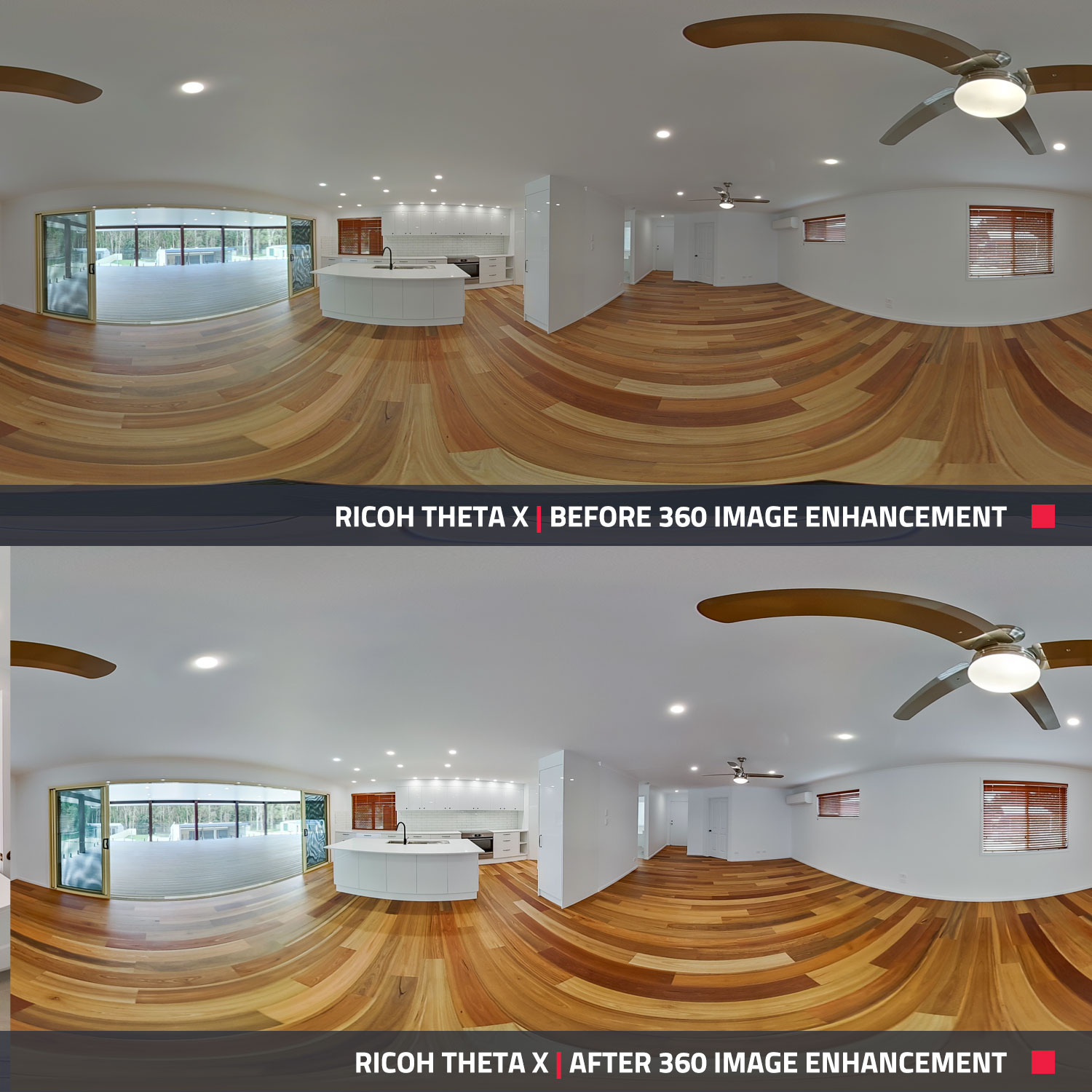 |
| The above images shot with the Theta X demonstrate the massive difference our Image Enhancement feature can make to the appearance of a Virtual Tour. |
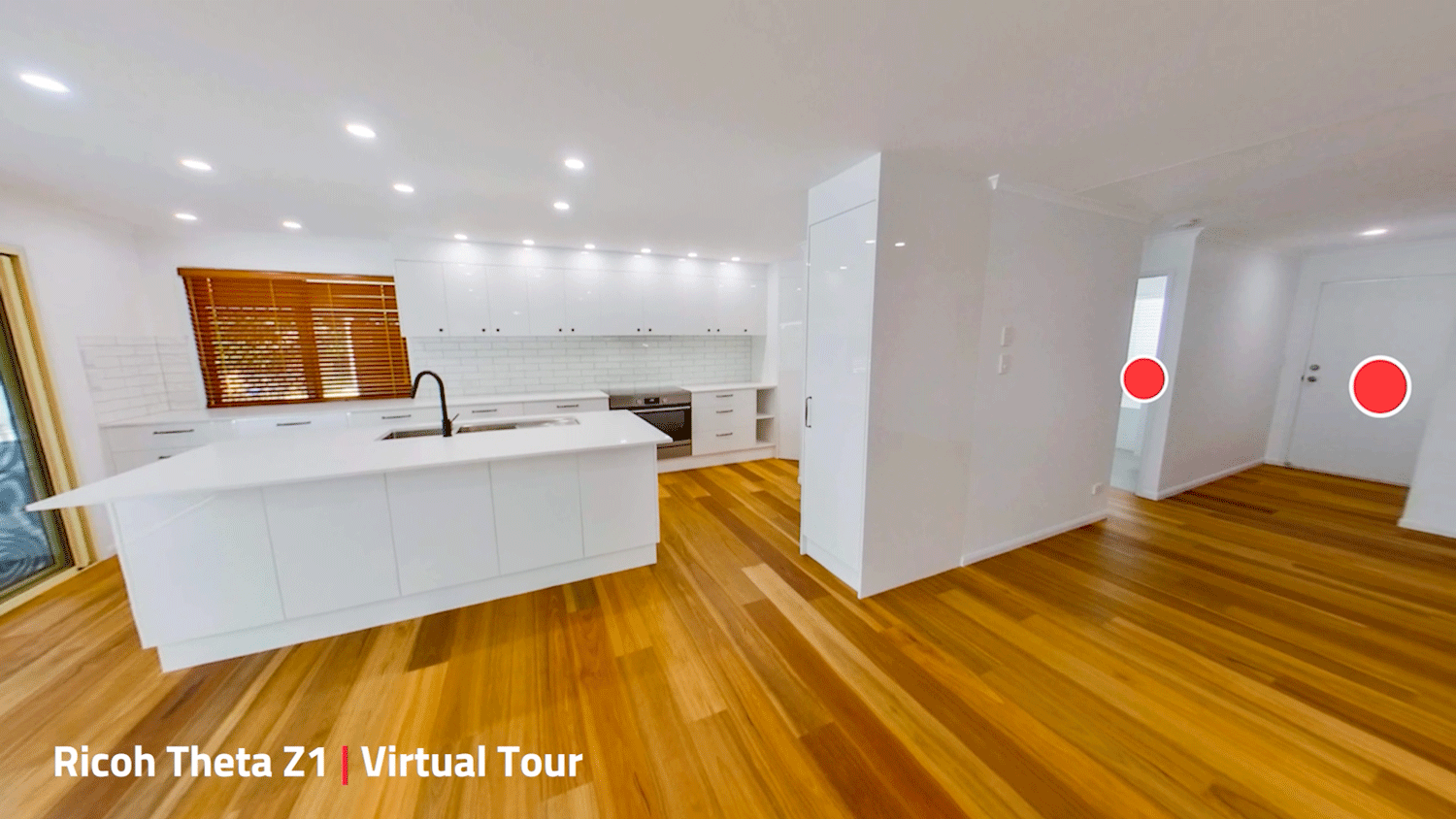 |
| Once the images have been edited, the Theta Z1 can produce a stunning Virtual Tour. |
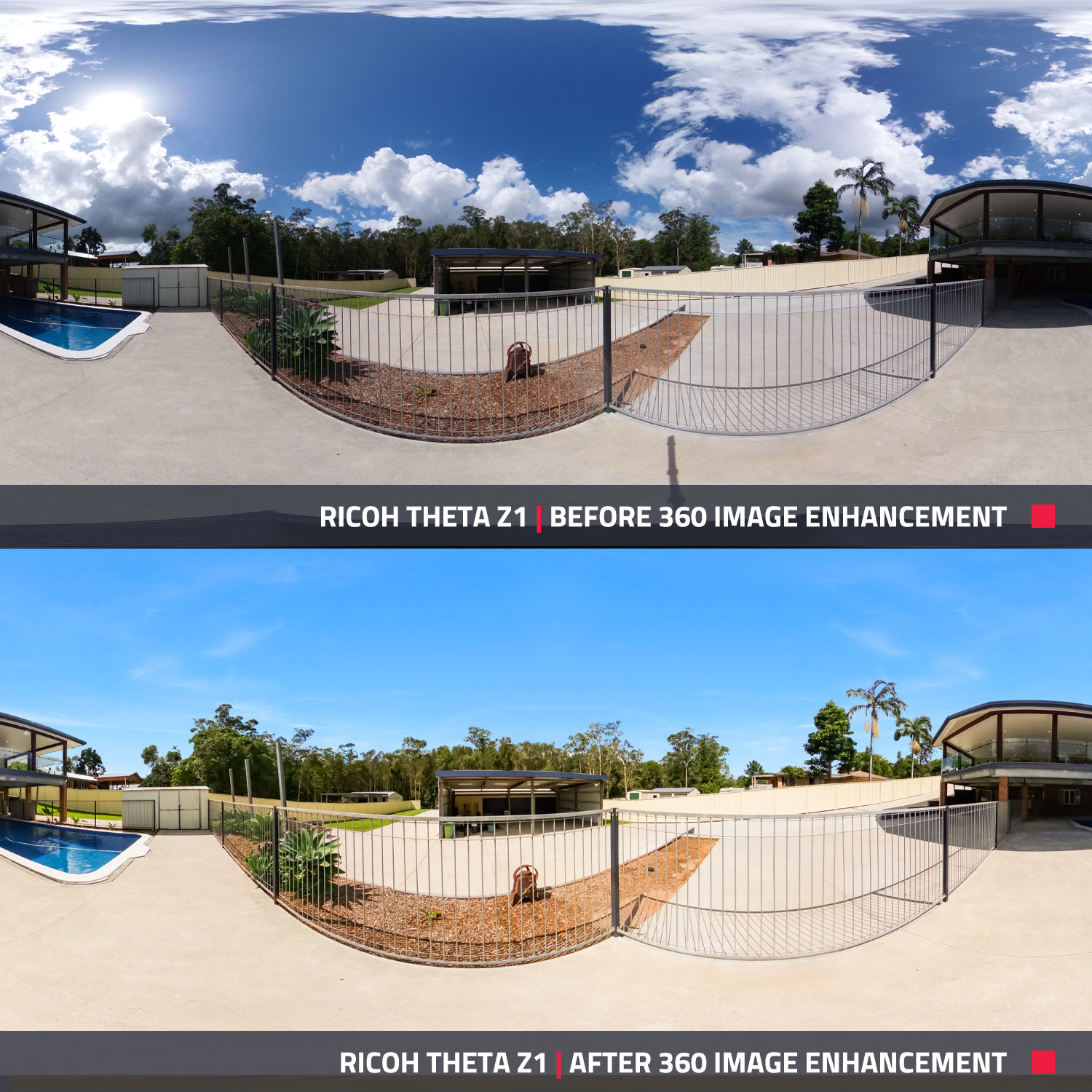 |
| Here you can see how our 360 Image Enhancement service can improve the look of your Virtual Tour. Compare the unedited image (TOP) with the below image where Image Enhancement has been applied. In the below image the pool and the sky are a deeper blue, the clouds are gone, same with the unsightly monopod shadow, and the obscuring shadows have been removed from the house itself. |
Conclusion: Good News All Around!
So what can we take away from this head-to-head matchup? The good news is, there's no real bad news. Both cameras have earned their reputation as being the best on the market for shooting Virtual Tours. What do you think?
Now that we've walked you through some of the highlights of each camera, why don't you virtually walk through the final product your self. Click on the below links to take each tour and let us know which camera you think has captured the superior product.
- Take the Theta Z1 360° Virtual Tour
- Take the Theta X 360° Virtual Tour
There are differing opinions as to which camera is better for shooting Virtual Tours. If the shots acquired in this test run seem to give a slight advantage to the Theta X, our co-founder Brad Filliponi has had extensive involvement with both models, and he prefers the Z1. Good news for all you Z1 owners out there! No need to trade the older model in for the more recent Theta X.
As the images in this post attest - so long as you select HDR Rendering as your setting (on either camera) and edit your image before compiling a Virtual Tour, you will end up with some great looking marketing materials.
If you don't own either camera and are trying to decide which to acquire, it might be wiser to cut your teeth on the Theta X.
- The Theta X is generally priced about $300 less than the Theta Z1.
- Based on the results of our experiment, the Theta X seems to return slightly superior images than the Z1.
- Unlike the Theta Z1, the Theta X features a micro SD card slot (microSDXC), giving you a lot more freedom and flexibility if you have to shoot multiple jobs in one day.
- According to most review sites, the Theta X seems to provide better smartphone connectivity than the Z1.
There are other differences when it comes to shooting video and audio capture. However, these variances fall well without the scope of our examination. We sought to answer the question, of which device is better for shooting Virtual Tours.
RELATED ARTICLES

Cold calling might be a forgotten art, but it still bears fruit. These practical tips and scripts will help you approach the art of cold calling in the Digital Age.
READ MORE
Here are the home paint trends to know in 2023. Find out the key colors, according to experts, and pick out the perfect coat of paint to help showcase a property to its highest potential. Know a property that needs a change? You need this blog.
READ MORE
Transform furnished listings into buyer magnets with Virtual Staging. Learn step by step how to create a polished, irresistible property that grabs attention, generates more inquiries, and sells faster.
READ MORE
Michael Jordan became a great basketball player because he developed all aspects of his game. Michael LaFido became a great realtor because he has developed a marketing repertoire to suit any property. Let’s look at these two great Michaels from Chicago, and see what else we can learn.
READ MORE
BoxBrownie.com is thrilled to announce our new partnership with Engel & Völkers Europe! This collaboration will equip real estate professionals across Europe with the cutting-edge tools they need to excel in a competitive market. Discover more about this powerful alliance.
READ MORE
BoxBrownie.com has recently released a new vertical of products specifically tailored to the commercial property market.
READ MORE